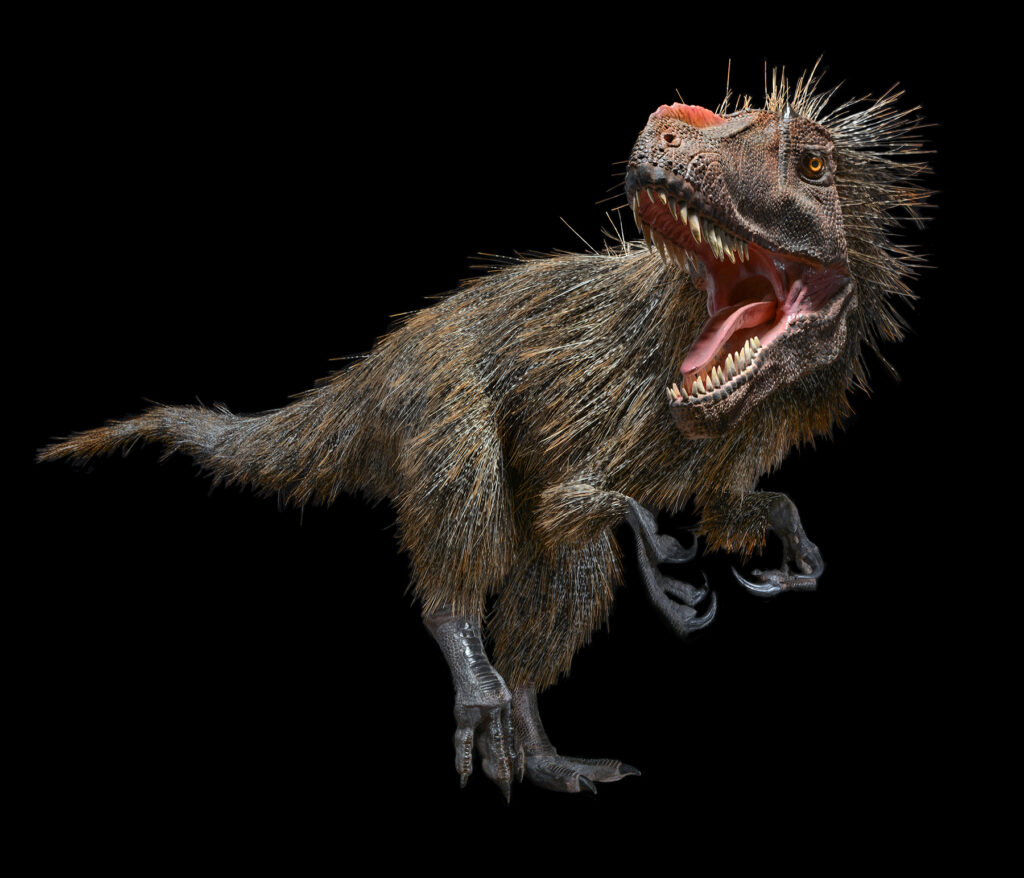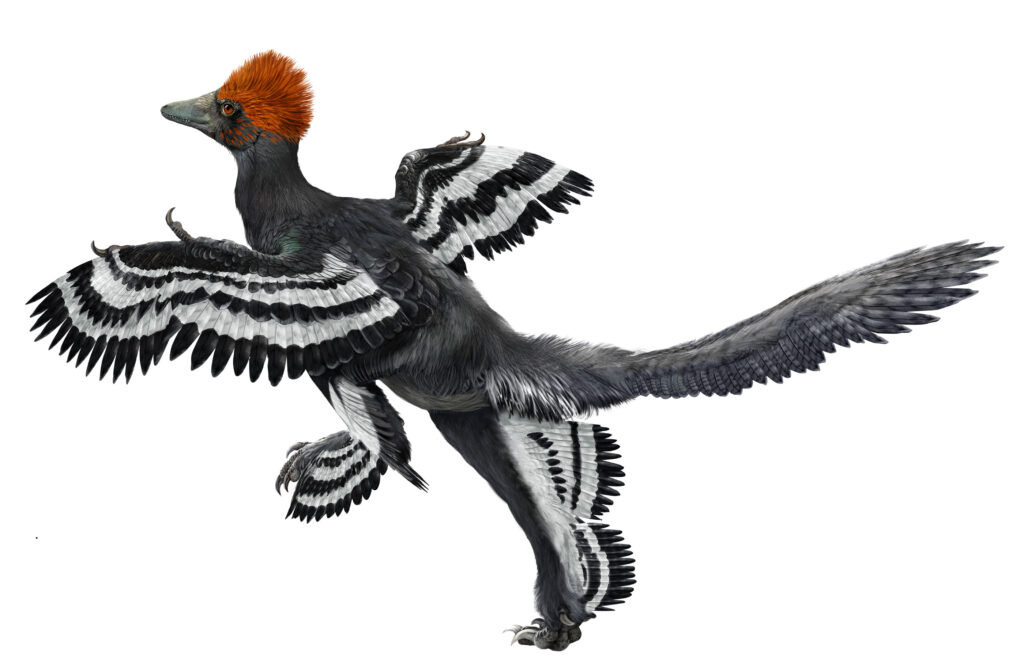- November 12, 2024
IMAS Announces Dinosaurs Among Us

New exhibition invites visitors to explore the link between birds—living dinosaurs— and their extinct ancestors, opening November 16, 2024

McAllen, TX – The next time you dodge a pigeon on the sidewalk, watch a sparrow eat from a feeder in a backyard, or order chicken for dinner, know that you just had an encounter with a modern dinosaur. Dinosaurs never really vanished from Earth. Most did go extinct, but their evolutionary legacy lives on all around us, in birds. The exhibition Dinosaurs Among Us will highlight the unbroken line between the charismatic dinosaurs that dominated the planet for about 170 million years and modern birds. The panels feature large-scale color illustrations of familiar and newly discovered extinct dinosaur species as they would have looked in life.
Organized by the American Museum of Natural History in New York with support from North Museum of Nature and Science, United States; Philip J. Currie Museum, Canada; Museo de Ciencias, Universidad de Navarra, Spain; and Universum Museo de las Ciencias de la UNAM, Mexico, Dinosaurs Among Us explores the practically obsolete boundary between the animals we call birds and those we traditionally called dinosaurs. Dinosaurs Among Us opens at IMAS on November 16, 2024.
Living birds belong to a group, or clade, called the Dinosauria. It includes the extinct dinosaurs and all their living descendants, which is why most scientists now agree that birds are a kind of dinosaur just like we are a kind of mammal. The more comparisons we make between birds and their closest non-bird relatives, the more connections we find. Using paleontological and biological evidence, audiences learn about the links between dinosaurs and birds by examining their reproduction, physical structures, and the evolution of flight, demonstrating that birds truly are the Dinosaurs Among Us.
This edition of Dinosaurs Among Us is curated by Dr. Akinobu Watanabe, Research Associate at the American Museum of Natural History and Assistant Professor of Anatomy at New York Institute of Technology. It is adapted from the Museum’s original exhibition of the same title, curated by Mark Norell, Curator Emeritus in the Division of Paleontology.

About the American Museum of Natural History (amnh.org)
The American Museum of Natural History, founded in 1869 with a dual mission of scientific research and science education, is one of the world’s preeminent scientific, educational, and cultural institutions. The Museum encompasses more than 40 permanent exhibition halls, galleries for temporary exhibitions, the Rose Center for Earth and Space including the Hayden Planetarium, and the Richard Gilder Center for Science, Education, and Innovation. The Museum’s scientists draw on a world-class permanent collection of more than 30 million specimens and artifacts, some of which are billions of years old, and on one of the largest natural history libraries in the world. Through its Richard Gilder Graduate School, the Museum offers two of the only free-standing, degree-granting programs of their kind at any museum in the U.S.: the Ph.D. program in Comparative Biology and the Master of Arts in Teaching (MAT) Earth Science residency program. Visit amnh.org for more information.
About the International Museum of Art & Science
Located in the Rio Grande Valley, the International Museum of Art & Science (IMAS) inspires visitors of all ages to explore the world of art and science. Through its diverse exhibitions, collections, and educational programs, IMAS empowers learners to pursue their passions and discover new interests. Accredited by the American Alliance of Museums and a Smithsonian Affiliate, IMAS is located at 1900 W. Nolana Avenue in McAllen, Texas. The museum is open Wednesday through Saturday from 10:00 a.m. to 5:00 p.m. and Sunday from 1:00 p.m. to 5:00 p.m. For more information on admission, events, and programs, visit theimasonline.org or call (956) 681-2800.

